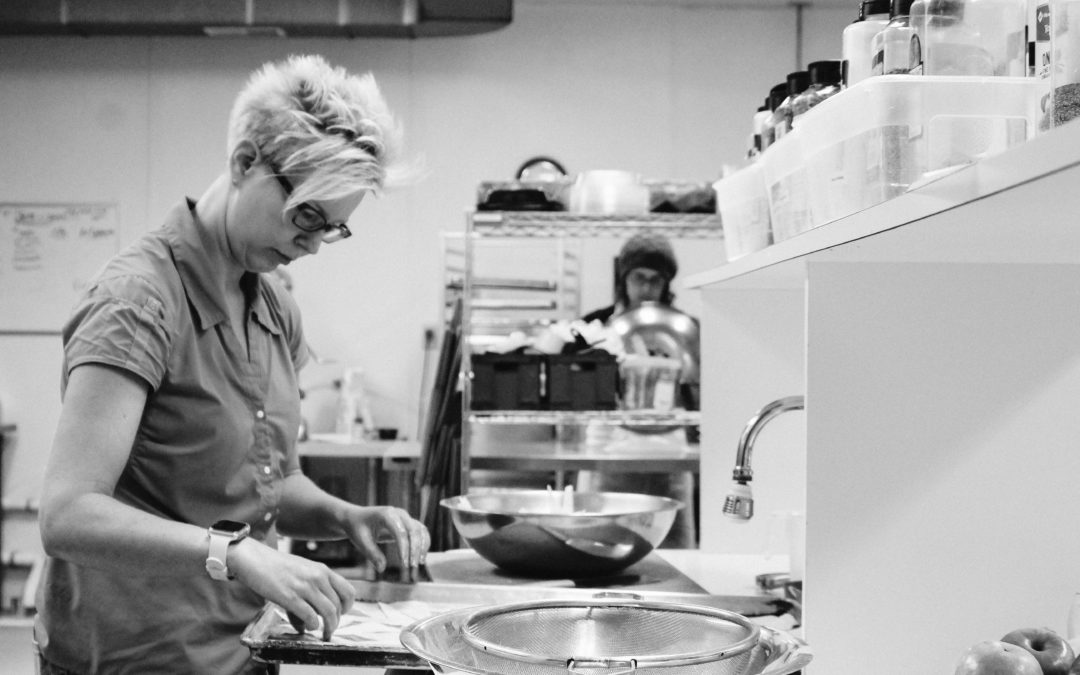The growth cycle of most small businesses that make their start in a shared kitchen or kitchen incubator is different from a business operating within its own space. Both face the normal challenges of scaling and the capital needed to support their growth, but businesses operating from a shared or incubator kitchen face the question of whether the facility itself is able to support that next stage of growth—with added space, storage, equipment, or services. If the answer is no, that growth stage could be the one that forces them to venture out on their own.
Thus, the growth of businesses incubated within shared kitchens is directly tied to whether the facility has a strategic plan of its own to guide its growth over the long term.
In the lifecycle of a shared kitchen facility, growth often comes when existing members start to outgrow the facility’s ability to support them—space limitations, access limitations, storage capacities, equipment needs, and additional programming and services. Faced with the loss of valuable members, the facility must make choices about its position in the market and its own ability to support the challenges of long-term operation—whether generating an adequate pipeline of newcomers to replace graduates or expanding in order to retain more members. Additionally, with increased demand and a higher percentage of U.S. incubators breaking even and even making money, smaller footprint facilities are presented with the possibility of greater impact with an expanded footprint.
There have been several announcements of growth plans in smaller kitchen operations of recent note. Can Do Kitchen of Kalamazoo announced its planned relocation into a new space that would offer expanded square footage and the opportunity for continued growth for its members. (New Venture Advisors is assisting CDK with a strategic plan for the new space.) La Cocina of San Francisco announced its planned development of a female-operated Food Hall that would allow growth opportunities for its graduates. North Carolina saw a boom in shared kitchen growth with City Kitchen expanding into at least one new facility beyond the Charlotte area (in Greensboro) and Providence Restaurant committing to run a new 11,000 square foot shared-use space.
In each of these examples, the shared use kitchen facility is undertaking expansion, relocation, or a new build in order to expand their physical footprint and, in most cases, expand programmatic connections that build stronger opportunities for existing members and graduates.
And in most of these cases, there are also examples of businesses that were forced to leave the facility due to their own growth demands. Operators noted that these planned expansions offer them the opportunity to support more of the lifecycle of the entrepreneurs and businesses that make up their communities.
However, just like their entrepreneurs, the necessity of capital is a major hurdle for many facilities to be able to commit to these new models.
The Power of Community
A significant majority of these smaller facilities—whether operating in shared space, outfitted space, or repurposed space—operate as nonprofits and utilize grant funding and donations to help defray their operational costs. The actual percentage of their total operational budget that is covered by user/member fees and income can be very small, especially since a large group of these facilities are designed expressly to focus on underserved and low-income populations with limited resources themselves.
Smaller operations are often faced with the necessity of new grant funding, private donors or advocates, or secondary income sources in order to raise the capital required for new or retrofitted locations and the long-term higher operational costs of an expansion.
Perhaps one of the most important lessons kitchen operators can learn from their own entrepreneurs is the power of community and collaboration. Entrepreneurs often seek out shared kitchens for manufacturing in order to build connections and develop their business within a like-minded community. This network can play an important role in their growth and next steps—from collaborations and shared retail or production leases, to assistance in addressing hurdles or missteps on their own path.
For shared kitchens, looking to their own community—from organizational partnerships, cross programming or funding resources from their municipality and state governments, and the anchoring ability of graduates as tenants or partners in a new location—can often be a significant resource in helping their expansion succeed. If anything, communication with their members—both current and alumni—offers a unique resource for determining how best to build upon the successful footprint from which they want to expand.
The question of growth then, for both entrepreneur and facility, links the success of both entities, and offers greater opportunity for them both.
(Photo Credit: Missy Al-Azzawi, Courtesy of Can Do Kitchen)



